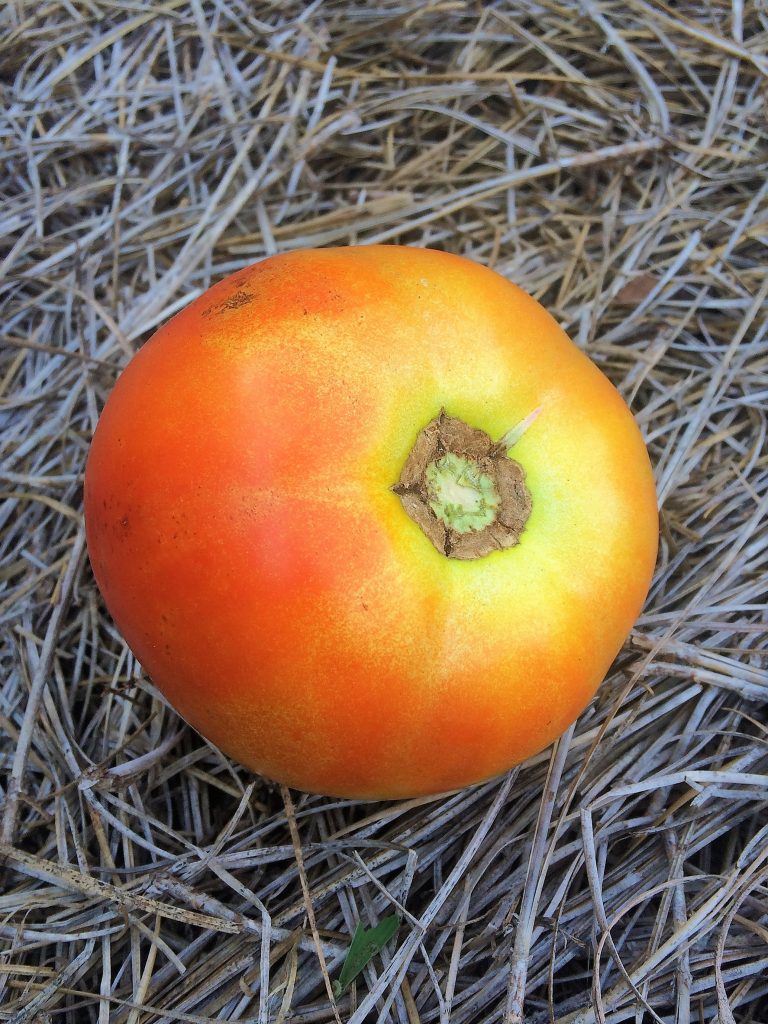By: Trevor L. Cofer, Elizabeth A. Guertal, James Pitts
For many Alabama vegetable growers, fresh market tomatoes represent a significant source of income. Growers often apply high rates of potassium fertilizer at planting because it is thought to be needed to promote growth
and uniform ripening. Two tomato growers I spoke with before my project expressed concerns that the area around the stem of the fruit remained yellow throughout the season (called yellow shouldering). Since more potassium is required to color a tomato than to ensure full yield, if there is insufficient potassium at fruit set, the fruit will not color properly, no matter how long it stays on the plant.
The objective of this research was to examine rates and sources of potassium fertilizers and their effects on tomato growth, yield, and fruit quality. The one year study was conducted during the summer of 2016 at the Auburn University Chilton Research and Extension Center in Clanton, AL. The experiment was arranged in a completely randomized block design, with three replications of each treatment. Potassium was applied at bed formation at rates up to the soil test recommendation of 180 lbs K2O/A (0, 60, 90, 120, 150 and 180 lbs K20/A) and with four potassium sources (potassium chloride, potassium sulfate, potassium thiosulfate, and potassium magnesium sulfate), all readily available to growers. After two weeks of growth, plant height and stem diameter were measured weekly. At one and two months of growth, plant tissue samples were collected and analyzed for percent potassium. At harvest, fruit was counted, weighed, and categorized based on complete or incomplete ripening (via visual inspection). After harvest, soil samples were taken and analyzed for extractable potassium (Mehlich 1 extract).

Figure caption: Tomato affected by yellow shouldering.
We found that tomatoes receiving potassium before planting had greater potassium content in leaf tissue than those that were not fertilized with potassium. However, this did not translate to increased fruit yield, nor did it reduce the instances of yellow shouldering of the fruit. Leaf potassium was likely not high enough early in the growing season to promote uniform ripening. Neither the potassium source nor potassium rate significantly affected tomato yield or occurrences of yellow shouldering over the harvest period at the applied rates, although the potassium rate did significantly affect the plants’ height and stem diameter. A higher potassium rate promoted taller plants, whereas a lower potassium rate promoted increased stem girth. Soil test extractable potassium showed low to moderate extractable potassium, irrespective of potassium rate or source. Mean and median soil test extractable potassium of all plots was 64 and 60 lbs K2O/A, respectively. We tested soil from a similar tomato study on the same research station that had no instances of yellow shouldering and found 299 lbs K2O/A of extractable potassium, an extremely high value. Comparing results from the two studies, we concluded that although the potassium we applied was sufficient to maximize yield (which are how soil test recommendations are given) it was far from sufficient to promote uniform fruit ripening. Such information could help Alabama farmers evaluate their potassium application strategies based on soil testing recommendations.
Statement of Research Advisor
Trevor’s work with fresh market tomato fertility helps Alabama growers make informed decisions when
purchasing their fertilizers. His work showed few differences due to the source of potassium. Thus, growers
can purchase the potassium fertilizer that prices out the best for them, and still have good yield potential.
—Beth Guertal, Crop, Soil & Environmental Sciences.
Last Modified: